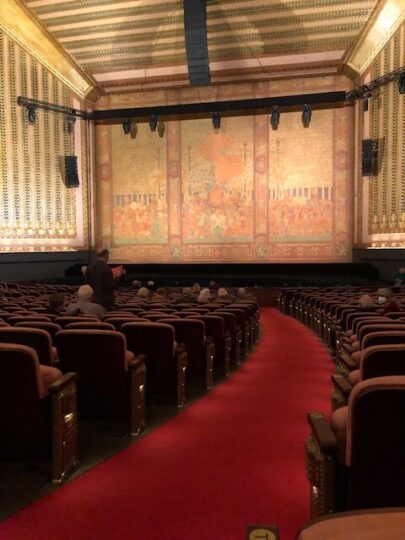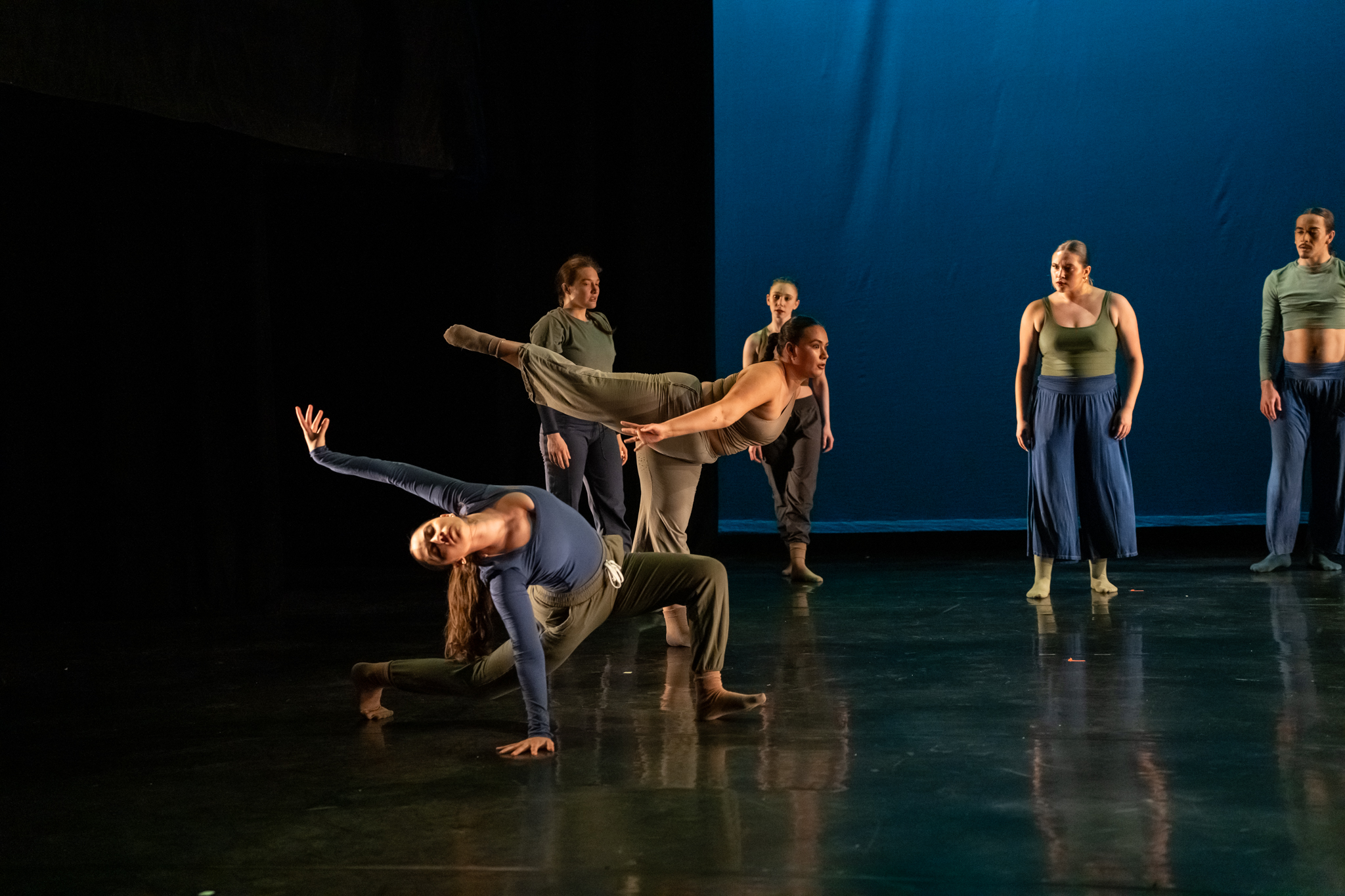
Elijah McTiernan, Taelon Stonecipher, Nick Arceo and Sean M.G. Caron in “Forever Plaid” at the Skokie Theatre. Photo by Laine Rogers
Highly Recommended
Before Jersey Boys there was Forever Plaid, one of the first rock and roll jukebox musicals, conceived in 1987 and initially performed in 1989.
The time is the early 1960s. A hapless quartet of close harmony singers who call themselves The Plaids find they have been killed in a car wreck but are conscious and singing better than ever. For the next 90 minutes they perform 23 songs including: Three Coins in a Fountain, Moments to Remember, and Love is a Many Splendored Thing.
Presented by MadKap Productions at Skokie Theater, the performance is reminiscent of a night club act from the fifties channeling the sounds of acts like the Four Freshmen, Four Aces or The Crew Cuts.
The silent generation represents the pre-Beatles era born during WWII and raised in a culture that valued conformity and respect for authority. The music of this period is characterized by smooth melodies and romantic ballads that featured crooners like Dean Martin and Perry Como but also emerging stars like Pat Boone and Patti Page.
The backstory of The Plaids’ demise seems an homage to songs like Last Kiss, Leader of the Pack and Teen Angel that tell tragic stories of young lives cut short by violent death.
The Plaids are comprised of Smudge (Nick Arceo), Frankie (Sean M.G. Caron), Sparky (Elijah Mc Tiernan), and Jinx (Taelon Stonecipher).
Caron has appeared in a number of Madcap Productions. His character Frankie seems to be the de facto leader of the group acting as the principal narrator of their story.
McTiernan as Sparky is indeed a flash of energy providing a good deal of the group’s comedic moments. Arceo’s low tones are featured in Sixteen Tons / Chain Gang while he provides an effectively humorous clanking percussion, tapping a spoon against a Coke bottle.
Each of the performers have excellent voices but Stonecipher, a recent arrival from Houston making his Chicago area debut has a wonderful tenor voice that soars dramatically, providing several emotional moments.
The ensemble’s quick-change five-minute version of a typical Ed Sullivan Show with jugglers, acrobats, ballet dancers, Topo Gigio et al to the tune of Lady of Spain is hysterical.
The scale of this production is spot-on and appropriate to the limitations of the Skokie Theatre stage. The set was simple but looked great and worked perfectly.
Directed by Edward Lindem with musical direction and expert accompaniment of Jeremy Ramey with bassist Jeff Smith.
Lighting design by Pat Henderson was very effective and the tuxedoed costume design by Wendy Kaplan felt like we were watching a stage show at the Copa or visiting a show lounge in 1960s Las Vegas. The only thing missing was sipping a Manhattan or Old Fashioned.
Details: Forever Plaid is a very enjoyable night out packed into 90 minutes of non-stop entertainment by MadKap Productions at the Skokie Theatre, 7924 N. Lincoln Ave., Skokie, IL through June 29, 2025. For tickets visit SkokieTheatre.org or call 847-677-7761








